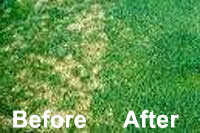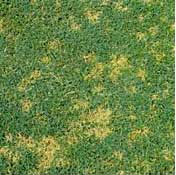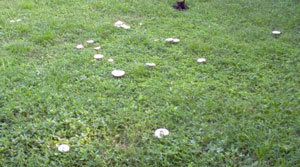

ometimes bad things happen even to the healthiest lawns. Lawn Diseases are one of those things. Diseases are enough to perplex all of us to no end. Many lawn diseases are not easy to identify and to distinguish from other problems such as pests or poor maintenance. Ask anyone who has encountered lawn diseases and they will tell you how frustrating they can be. Much like human diseases, lawn diseases can be difficult to properly diagnose and even harder to treat correctly. And just when you thought you had all your lawn care problems solved! Fear not, we have some tips to help you identify and treat your lawn problems.
Chances are that some of you reading this will already have a lawn disease problem. If so, the most common controls is to use a fungicide on your lawn. Various types of fungicides exist, so make sure that you use the right one. Some of the broad-spectrum fungicides will not only treat your disease, but can kill-off other good organisms and insects as well—not good! Since most lawn diseases are identified in spots before they spread, it's a good idea when using fungicides to first try to spot treat these areas to minimize the damage a fungicide can cause to your lawn's ecosystem.
As always, follow the instructions listed for each fungicide to help prevent possible damage to the environment and illnesses that can be caused by its use.
Fungicides
Diseases can form a resistance to fungicides after repeated use. Try to minimize this through using various types of fungicides.
There are three types of fungicides available:
- CONTACT FUNGICIDES: once applied, remain on the plant's surface and kill spores that come in contact with it.
- SYSTEMIC FUNGICIDES: applied to the leaves and then moves throughout the plants circulation system including its roots. Has a longer residual life span than contact types.
- PENETRANT FUNGICIDES: similar to Systemic types, but act as a preventative treatment to stop the growth of pathogens.
Best cure is an ounce or two of prevention. The best prevention though is maintaining healthy turf, be careful of over-watering, or watering at the wrong time of day.